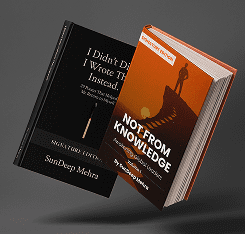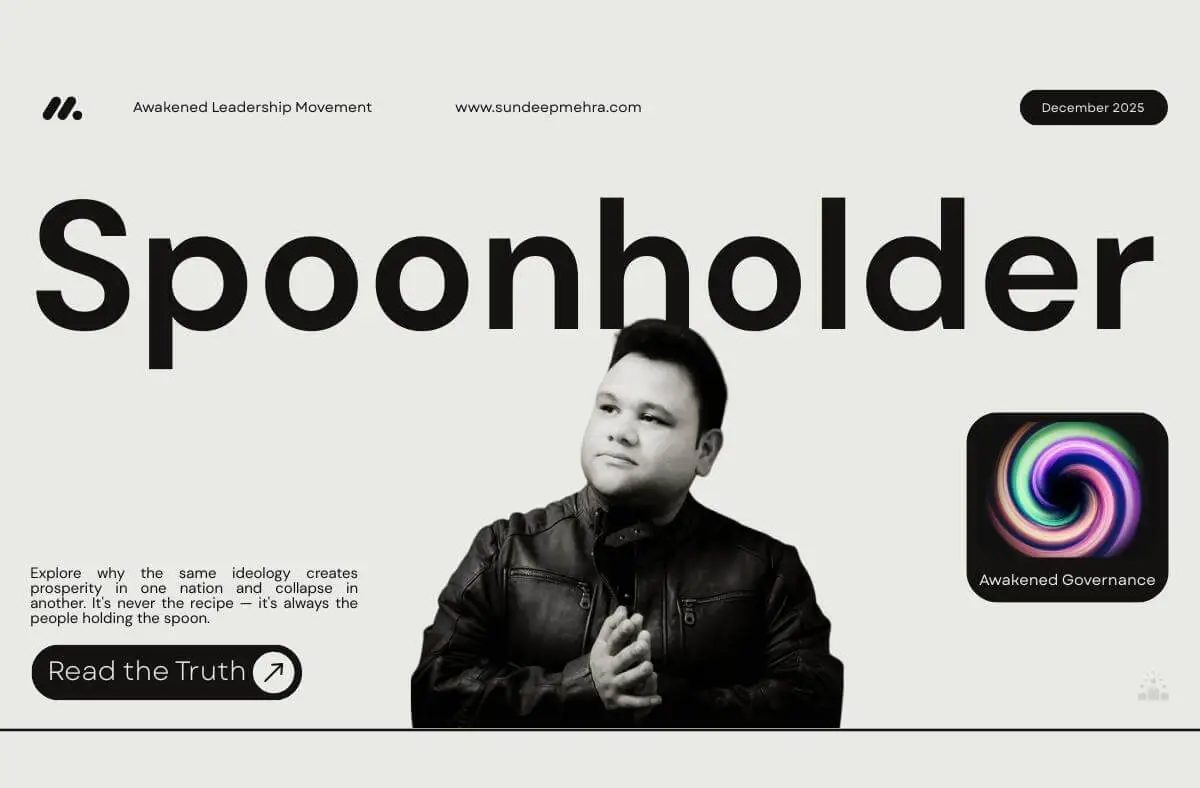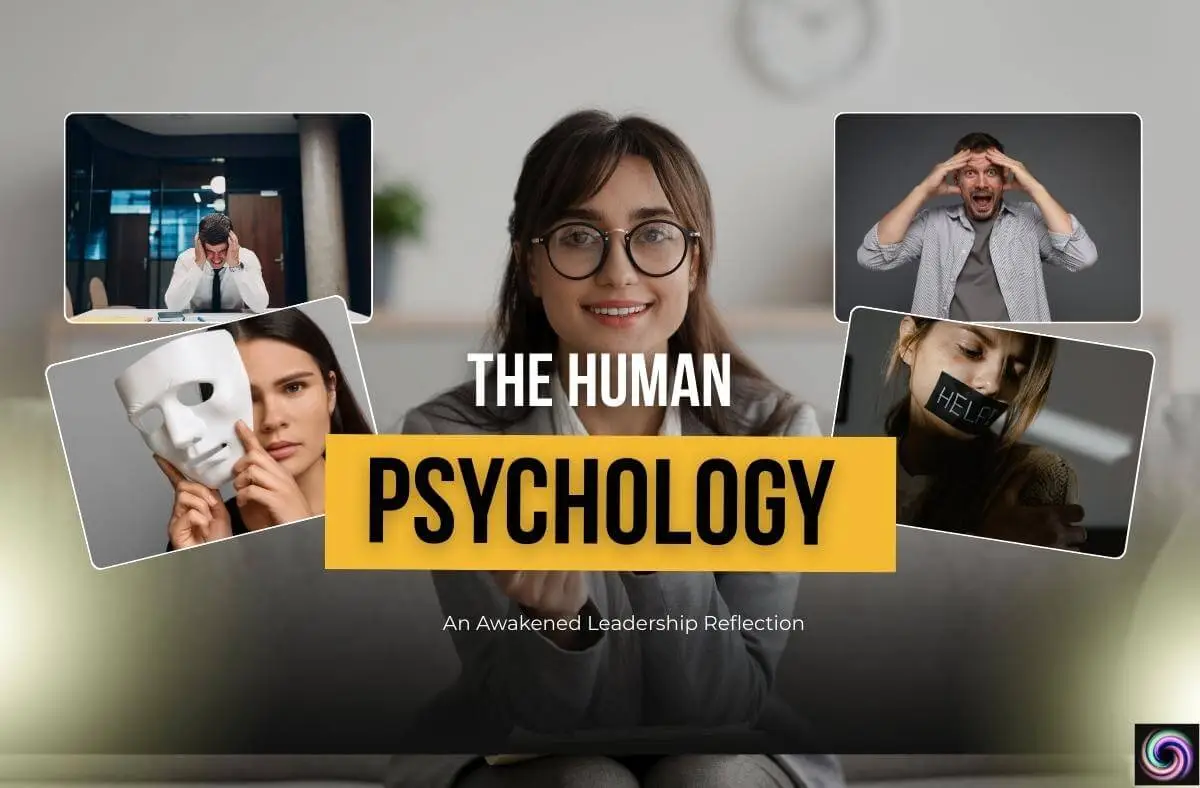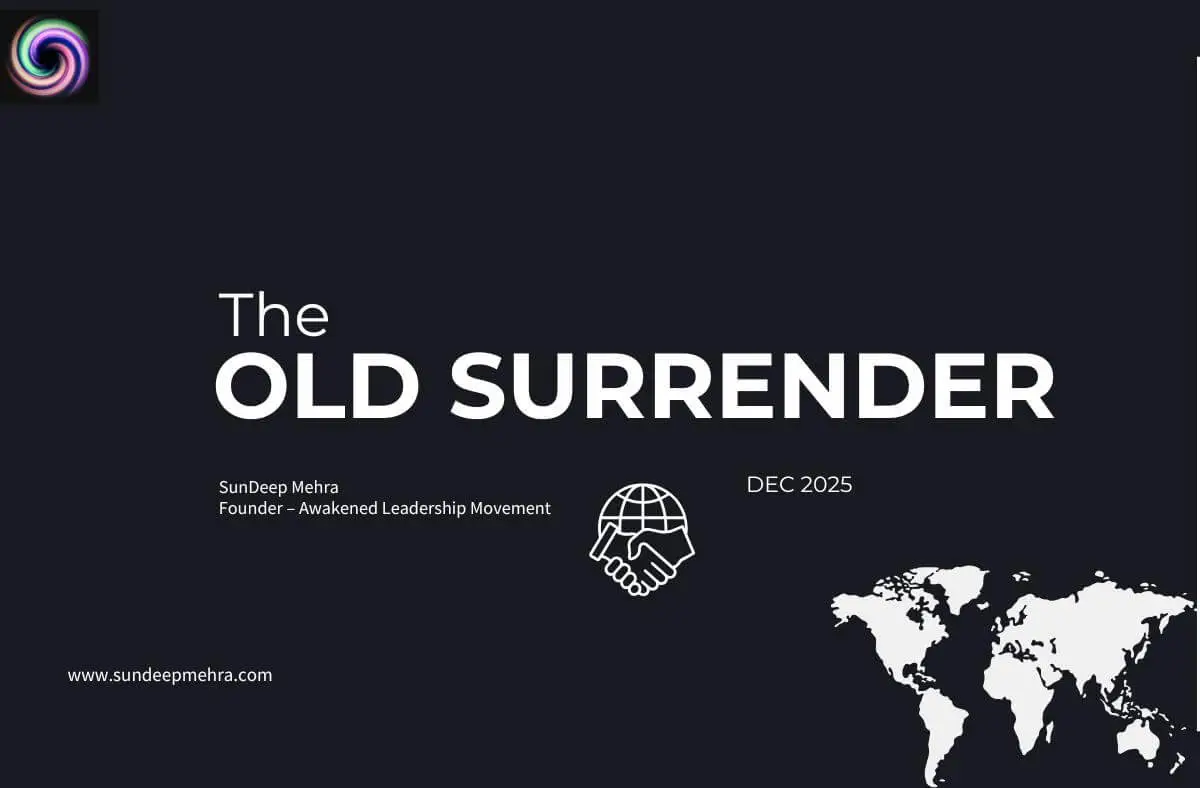
The Faultline We Refuse to See
Every day, we see another AI tool launched. Another course. Another breakthrough. The code advances, smarter, faster, sharper. It rewrites workflows, resets industries, and quietly reprograms the pace of human time.
But the further this code flies, the more one thing becomes clear: human understanding is not evolving with it. Not in policy. Not in governance. Not in systems. Not even in meaning. While algorithms sprint forward by the light-years, human societies, ministries, boards, institutions, governments, are stalling, drifting, even regressing. We are not just lagging behind. We are heading in reverse, quietly shedding the very essence of what it means to be human: dignity, clarity, wisdom, presence.
This is not a cautionary tale. This is the present. And this message is not for one sector. It is for every node in the system: ministers and ministries, AI labs and leadership boards, institutions, councils, and decision-makers of every kind. If you’re guiding anything with power, this moment concerns you.
Because if we don’t correct the trajectory now, it won’t just be a gap between machine and man. It will be two rockets launched into different destinies. One will colonize the future. The other will never leave the ground.
What “Soul” Means in Governance
When I speak of soul in the context of AI governance, I am not pointing toward anything mystical or abstract. I am pointing toward something far more grounded: a deep, enduring understanding of what it means to be human.
Soul means keeping humanity at the center. It means remembering all that we have learned, unlearned, discovered, misunderstood, dreamed of, and feared, everything that makes us human and keeps us awake to our role in the world. Soul in governance means asking: What do people need, not just today, but at the level of their dignity, clarity, and future?
If governance can hold that question, not as a slogan, but as an active design principle, then AI can serve as a beacon through the storm. But if that principle is sidelined, if the soul is seen as a soft add-on, the very technologies we build to guide us will turn on us. They won’t just fail, they will wound. The beacon becomes a laser, not guiding ships to shore, but burning through the very people it was meant to protect.
Governance has soul when leaders and systems care more about humanity than power, more about people than metrics. When decisions are made in real-time, with clarity, courage, and presence. When leadership remembers that humans are not the problem to fix, but the reason anything must exist at all.
This is not spirituality. This is not an abstraction. This is the essence of being human, the only truth we carry into the future. If your policies don’t start there, your systems will collapse, no matter how advanced your code becomes.
Signals of Collapse When Soul Is Missing
The collapse doesn’t always begin with explosions. Often, it starts with silence.
We see AI systems fail not because the code is broken, but because those in charge of the code never paused to ask what it means to protect the human behind the data. Every day, digital fraud multiplies. Deepfakes slip past our eyes. Fake identities, AI-generated misinformation, and precision propaganda quietly distort public trust.
In the name of progress, truth becomes fluid. Warzones blur. Elections shift. People lose their ability to tell real from artificial, yet the systems responsible for shaping this reality rarely take responsibility. Not because they can’t. But because governance without a soul doesn’t ask who will be harmed, only how fast something can be done.
And beneath it all, something deeper is corroding: human dignity.
In systems built purely for speed and scale, values like loyalty, integrity, discernment, and effort begin to vanish. We are training people to stop thinking. To stop questioning. To stop using the very abilities that made us human in the first place. If a system does your job faster than you, you stop learning. If it gives answers quicker, you stop asking. Bit by bit, the soul becomes obsolete, and with it, the very meaning of effort, reflection, and earned understanding disappears.
You don’t need to look far to see where this is happening. The digital sector, where nearly every click is optimized for engagement but not for truth. The worlds of reading, writing, and communication, where depth is collapsing under the weight of generated content. The spaces where we think, create, and speak, quietly losing their human center.
No one sounds the alarm because the systems still work. But make no mistake, the soul is being stripped silently. And by the time you notice, it will already be gone.
The Human-Centered AI Governance Playbook
There is no one-size-fits-all checklist for soul-aligned AI governance. Governance with soul is not a framework you download, it is a practice you embody. Still, there are foundational elements that no institution can ignore when deploying AI systems that touch human lives.
It begins with the Intention Audit, not a formality, but a deep excavation. Why is this system being deployed? Who will it affect? What do we know about how this system has behaved in similar contexts in the past, not just technically, but socially, behaviorally, psychologically? What human values has it amplified, eroded, or ignored? You don’t just track the system’s performance. You unearth its evolutionary footprint, its invisible influence on thought, decision-making, and power.
And from there, governance must answer harder questions: What is the extent of human override in this system? How reversible are its decisions? What are the gaps in understanding, in data, in deployment? These answers must shape the implementation, not come after the damage is done.
There is no governance without responsible adaptability. These practices are not fixed checkboxes. They must be designed based on the specific context, purpose, institution, and the lives it touches. Every deployment must be examined holistically across past failures, future risks, present purpose, and systemic blind spots. Only then can any practice claim to be ethical.
The proof that these practices are working is not found in a well-written policy deck. It is found in the discipline of execution. Are these audits being done with seriousness or staged for compliance? Are decisions being paused when risks emerge, or pushed forward in the name of competition? Are people within the system empowered to speak up and is anyone truly listening? Are we building systems we can actually shut down if needed?
Real governance doesn’t rush change. It tracks it, tests it, questions it, refines it, and personalizes it to human realities, not just metrics. Without disciplined clarity, implementation becomes theater. Without soul, ethics become branding. If we want this shift to matter, we must reward integrity over momentum.
If a leader were to ask, “How do I know if my governance is truly human-centered?” The answer is brutally simple. Sit with yourself. Reflect on what you have built. Forget the title you hold. Ask if what you have done, not as a founder, not as a policymaker, but as a human being, truly gives you the sense that you acted in truth. If the answer gives you peace, clarity, and a quiet sense of gratitude, then you are leading something real. If not, no outside audit can make it so.
Roles — Leaders, Not Coders, Set the Tone
One of the most dangerous illusions in AI governance today is the belief that ethics is a technical responsibility. That compliance teams, AI researchers, or risk officers will handle the moral weight, while leadership focuses on speed, funding, or reputation. If we have reached a point where leaders believe their role ends where deployment begins, then we have already built failure into the system.
AI governance with soul doesn’t start at the bottom. It starts at the top and it must flow through every layer. Ministers. Board chairs. CEOs. Founders. Department heads. Legal advisors. Every single individual who has the power to influence decisions, allocate resources, approve projects, or frame strategy must take full ownership of the ethical foundation on which their systems stand. Because what is at stake is not a product launch or a market win. What is at stake is whether leadership remains human, or becomes artificial.
The old structure of responsibility must be broken. It’s not the job of one unit, one department, or one ethical council to carry the soul of an entire system. It is the collective responsibility of creators, decision-makers, and consumers alike. No AI system built for public use can be governed with integrity if leadership disowns its moral role. No framework will work if the people implementing it have not taken their own humanity seriously.
Real governance with soul cannot be outsourced. It must be held internally as a discipline, a mirror, a test of integrity. The proof is not in how many frameworks a board signs off on. It is in how deeply leaders have reflected on the real consequences of their choices. The kind of reflection that brings silence. The kind that asks not, “Is this scalable?” but “Can I stand by this as a human being?”
If governance doesn’t begin there, it doesn’t begin at all.
Operating Cadence. How This Runs Weekly
Governance with soul is not a one-time policy. It must become a rhythm. It must become a breath. And for any ministry, institution, or board that truly wants to operationalize what we call awakened AI governance, there are rituals that cannot be skipped, not once, not ever.
Yes, you will need an ethics council. Yes, you will need red team reviews, soul alignment checks, human impact scans. These are expected. But none of them matter if the people in the room are still performing. None of them matter if everyone is still speaking from obligation, from pressure, from hierarchy.
The one ritual no one writes into the governance model but must sit at its core is something simpler and harder: sitting down, as individuals, and speaking from within. Not about technical milestones. Not about investor pressure. But about what is really at stake. About how it feels to be part of what is being built. About whether, if you were the end user of this system, you would still support what you have just signed off on.
In every organization that claims to lead AI responsibly, there must be space for this kind of closed-door, no-title, no-pretense gathering. Not spiritual. Not performative. Just human. Sessions where decision-makers become citizens. Where creators become future consumers. Where you imagine yourself 50 years from now, living with the very outcomes you have just engineered.
This is not a theory. It is the only way to stay awake. Because without inner clarity, outer governance becomes mechanical and mechanical governance eventually collapses under its own blindness.
What should be reviewed in these meetings is not just performance data. It’s presence. It’s whether reversibility is possible. Whether dissent was truly heard. Whether this system serves the evolution of the human being, or dilutes it. Whether the outcome is making people more aware, more capable, more connected, or more dependent, distracted, and hollow.
No one talks about this, but it is the only ritual that matters. Staying human, together, regularly, with courage is the most advanced governance mechanism we will ever design.
Because if we don’t meet each other fully as humans while building the future, we will eventually build a future where humans no longer matter.
Metrics That Matter
You can’t govern what you don’t measure, but you also can’t measure what you haven’t understood.
In human-centered awakened AI governance, metrics must go far beyond technical performance or output scale. They must track human consequence, psychological impact, social distortion, and existential erosion. Otherwise, all we are doing is reporting how efficiently the system drifted out of alignment.
If we want to measure true health through awakened AI governance, we need a new set of metrics, grounded not in optimization, but in human reality.
We start with reversibility speed, the time it takes for a harmful system to be paused, corrected, or shut down after ethical concerns are raised. Then comes damage analysis, not just in legal terms, but in terms of human experience. What behaviors were altered? What dignity was lost? What dependency was created? What power shifted in silence?
We need to track false certainty rates, how often users or leaders over-trust a system’s judgment, not because the system was right, but because it sounded confident. Equally important is the urgency distortion index, how many critical human issues are ignored because AI makes the wrong priorities look important.
And perhaps most crucially, we need a space to measure the unseen: digital addiction, emotional dulling, altered perception, psychological conformity. These are not bugs, they are signs of systems that are working exactly as designed, but without soul.
There are also metrics no boardroom dares to track, like the perception gap: the difference between what a system is doing and how leadership interprets its impact. If we don’t measure the mindset with which systems are built and governed, we will never understand what they are truly doing.
And when we have these metrics, Leadership must do more than review them. They must sit with them. Speak about them. Reflect publicly when needed. Privately when honest discussion is required. But always, they must act.
Because metrics are not there to impress. They are there to disrupt. To force us to choose. To break the comfort of ignorance and reveal the weight of our creation.
And if we cannot govern ourselves through those numbers, no system we create will be able to govern anything at all.
The 90-Day Roadmap: Bringing Awakened AI Governance to Life
Awakened AI Governance is not a rollout. It is not a checklist. It is not a toolkit. It is a remembering.
But institutions need rhythms. And so, we give them a form. Not to trap the soul inside structure but to give that soul a path of awakening through which to act.
The first 15 days are not for innovation. They are for acceptance.
This is the beginning. Not the beginning of a strategy, the beginning of truth. This phase is not about appointments and policies. It’s about surrender. Not giving up, but letting go. Letting go of the ego that believes it already knows. Letting go of the systems that no longer serve. Letting go of the inherited behaviors that have been optimizing for everything but human dignity.
In this phase, leadership must stand still and say: this is where we are. This is who we are. And we are ready to lead differently.
From Day 16 to Day 45, the work begins to see.
This is not the seeing of reports or data but the seeing of what is truly unfolding. Where are we creating harm? Where are we losing clarity? Where has the soul already begun to erode? Every system must be examined not just for what it’s doing, but for how it feels. What tensions it creates. What dependencies it grows. What it silences. This is the phase of full exposure and full honesty.
From Day 46 to Day 75, it is time to unite.
Here, the scattered pieces must come together. Silence must meet courage. Vision must meet decisions. Ethics teams must meet engineering. Policy must meet soul. All functions of an institution — leadership, advisory, deployment, communication — must now coalesce into a shared rhythm. This is where the shift becomes visible. Not loud, but embodied. Alignment is felt here, not just signed.
Then comes the shift itself.
By Day 90, the institution must be in motion, not performing, but transforming. Pre-mortems should be documented. Human override mechanisms must be defined. Soul-alignment reviews must become calendar-bound. And most importantly, the public and internal signals must match. People inside and outside the system should feel the change. Not in slides, in presence.
And beyond this comes the living force of the awakened AI governance model — the +1. Improvisation.
The awakened leadership model does not end in steps. Once it begins, it evolves. Improvisation is what allows the system to adapt as a living intelligence. It sees what is missing, and brings it. It listens to silence, and responds with presence. It does not follow hierarchy. It follows necessity.
Awakened AI Governance is not about acting faster. It is about acting truer.
And once that shift begins, the calendar is no longer a countdown, it becomes a commitment.
Sector Snapshots. What Changes in Practice
Healthcare:
Under awakened AI governance, healthcare no longer begins with fear. It begins with belonging. Machines don’t replace care, they extend it. Tools, devices, diagnostics, and platforms are designed not to dazzle but to align. People trust what touches their bodies, because they know the system was built with human dignity in every layer, from the device to the data. Patients feel seen. Practitioners feel supported. Hospitals stop being institutions of urgency and become ecosystems of presence. The machine becomes a companion, not a gatekeeper.
Finance:
When the soul and awakened leadership returns to finance, the chaos quiets. Fast gains give way to real wealth. Patience replaces panic. Institutions start serving long-term futures, not just quarterly performance. People no longer chase money from fear, they align with it from purpose. Risk doesn’t vanish, but it becomes conscious. Trust returns, not just in markets, but in money itself. Value is no longer calculated only in returns, but in responsibility.
Public Safety and Policy:
When governance is awakened, people no longer walk with suspicion in their eyes. The line between citizen and system begins to dissolve. The government isn’t feared, it’s trusted. Law enforcement doesn’t provoke, it protects. Limitations are clear, and so are rights. Creativity rises again, because fear is no longer the regulator of behavior. Skill and contribution become visible again, and the institutions that once felt opaque begin to feel human.
Education and Digital Systems:
Under awakened governance, education stops being a system of sorting and starts being a system of remembering. Students are no longer optimized for exams, they are guided toward purpose. Content systems stop feeding addiction and start cultivating potential. Technology doesn’t distract, it clarifies. The youth are no longer surrounded by noise, but by clarity. The future becomes a place of participation, not survival.
Global Politics:
When politics is governed by awakening, clarity replaces performance. Decisions begin with purpose, not posturing. Leaders rediscover what it means to serve. Institutions remember why they exist. The obsession with power begins to fade and is replaced by the courage to hold responsibility. Nations begin speaking to each other not with strategy, but with vision. And humanity finally becomes the constituency.
Limits and Non-Negotiables
Awakened AI governance draws a clear line.
There is no space, not even a corner for ego-driven systems, profit-only ambitions, shortcut obsession, manipulation, or machine-first ideologies. There is no space for unethical gains masked as innovation. No space for leadership without clarity. No space for institutions that chase monopoly while preaching progress.
If you are building with speed but without soul — stop.
If you are designing for control but not for contribution — stop.
If you are scaling without presence, or deploying without inner alignment — stop.
Power games are not innovation.
Quick wins are not evolution.
Energetic dissonance is not leadership.
Any system, organization, or decision-making process that ignores human value, refuses collective clarity, or operates from greed, superiority, and performance alone is already collapsing even if the numbers look good.
If awakened leadership is not present, the foundation is false.
And if you see someone acting as if they are leading but the energy behind their leadership lacks truth, stillness, and clarity, you are not inside awakened governance. You are standing inside systemic denial.
The Choice in Front of Us
This is not a debate between innovation and ethics. This is not a tension between progress and caution. This is a choice between a future designed by presence or a future collapsed by performance. We do not govern machines by writing more code. We govern them by choosing who we are before they arrive. And that choice cannot be delegated. Not to engineers. Not to frameworks. Not to time.
The truth is simple: if we lead with soul and awakened leadership, the system will carry it. If we don’t, it won’t.
Awakened AI governance is not the future of leadership. It is the last chance for leadership to remain human.
FAQ
Q1: What is human-centered Awakened AI governance?
Human-centered Awakened AI governance ensures that all decisions, systems, and outcomes are designed around human dignity, not machine optimization, prioritizing presence, reversibility, and responsibility at every level.
Q2: How is awakened AI governance different from traditional AI ethics frameworks?
Awakened AI governance does not rely on external compliance checklists. It begins with inner clarity, leadership responsibility, and systemic alignment rooted in human values, not performative ethics.
Q3: What role do leaders play in ethical AI governance?
Leaders are not observers of AI ethics, they are the source. If they don’t carry truth, no system under their command will carry it either.
Q4: Why do we need new metrics for AI governance?
Traditional metrics track system output. Awakened metrics track human consequence, including reversibility speed, false certainty, perception erosion, and trust restoration.
Q5: How can institutions implement awakened AI governance practically?
Begin with acceptance, clarity, alignment, and shift, then improvise through continuous presence. Appoint awakened leadership and soul-aligned roles, run internal truth checks, and build systems that are led, not just launched.
















